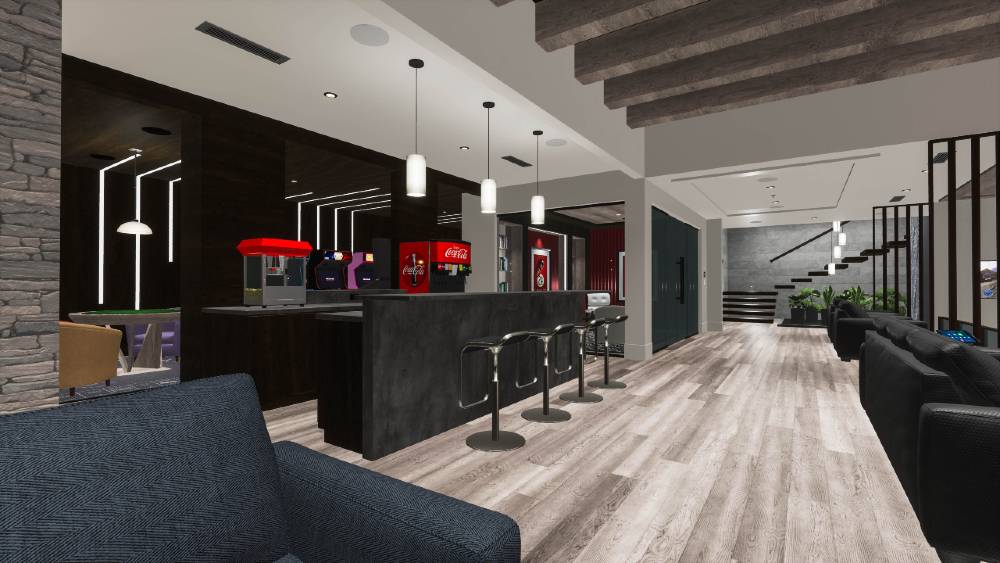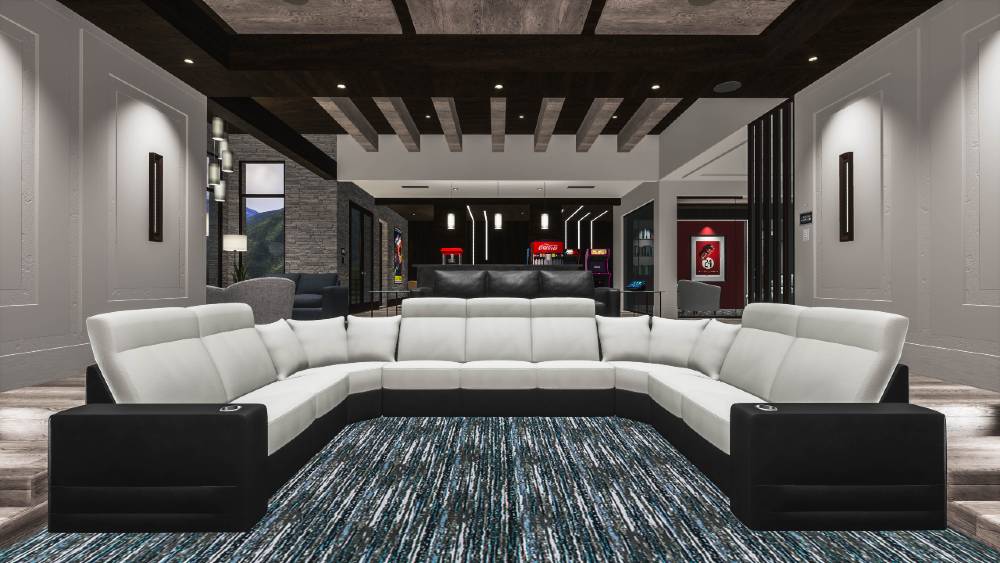A big benefit of virtual reality software in the smart home and AV realm is the ability to walk customers through project spaces and details in real-time. The newest VR advancements bring customers, builders and designers the chance to see full concepts for media rooms, home theaters and other living spaces by wearing a VR headset – pioneered in the custom industry by Modus VR’s design tool.
The company’s VR software has enabled integrators to show clients their vision, close deals in one session, and differentiate from the competition. Herriman, Utah-based Tym Smart Homes & Home Theaters does just that, and also has learned to leverage Modus VR without relying on the typical scenario in which integrators and customers need to be at the same location, both wearing VR headsets to experience the full effect.
Tym Leverages 360-Degree Designs When Needed
Tym is based in Utah but along with local clients it has customers all over the world, so on-site visits can’t always happen. Due to the pandemic even customers within driving distance might not want to visit in person or they may take months to set an appointment.
So Tym began using Modus VR and its suite of services in unique ways to maximize the design tool’s benefits and continue to wow customers and close deals.
“We have to recognize that clients want convenience. Even without the live VR client piece, this is the most powerful design tool that enables us to present complete spaces and create realistic 3D renderings that we can present to clients digitally no matter where they’re located — across the continent or the world,” says Tym designer Brad Montgomery.
“Customers can view our entire design and even move about the space at their leisure on their computer or smart device. They can review it with us, we can adjust the project together, and they can then share the virtual links and 3D renderings with friends and family for input – and excitement. It’s as close to an immersive VR experience as it gets, but with the convenience and comfort of the client staying at home.”
To give customers a solid sense of how their tech-centric spaces could look and function, Tym creates the room(s) and then replaces the VR presentation with the Modus 360-degree design and presentation feature (which the company highlighted at CEDIA Expo last fall).
Instead of walking through the space in virtual reality, customers can see and navigate via computer mouse or any device, “standing” in the middle of the room and swiveling to view and experience their entire room or home. It’s similar to what people might be familiar with real estate 3D views, only more detailed – and AV accurate. TVs, projectors, loudspeakers, equipment racks, keypads, touchpads, virtual assistants, acoustical treatments, furniture, structural elements such as windows and doorways, artwork and architectural details are all there, and to proper scale, placement, color and functionality.
The Tym team incorporates the full menu of Modus VR objects into their designs, adding a few extras from third-party software to further personalize and enhance the client’s experience.
“A customer favorite is the ability to ‘fly through’ the room overhead,” Montgomery explains. “The Modus VR software is so friendly, we’re able to incorporate some of our own special touches like this to make our designs and presentations uniquely our own, but with Modus VR as our design software backbone.”
Modus VR Software Tool Helps Extend Beyond Home Theaters
Tym has moved from primarily home theaters to using the software to design other areas. Modus VR can accurately render aspects such as hallways, allowing clients to walk through the home, moving from room to room and understanding scale and technology.
“We initially used Modus VR for home theater designs, but it’s blossomed into a tool we also use to create casual entertainment spaces, media rooms, living rooms, rec rooms and more. As more people are entertaining at home, Modus VR is well poised to extend its reach not only throughout the home but beyond,” Montgomery states.
He cites a massive multipurpose entertainment “man cave” for customers in Colorado as one project that epitomizes how Tym enlists Modus VR. This area was so important to the clients, he says, that they contacted Tym before the architectural blueprints were drafted. In fact, Tym’s design of the man cave will eventually serve as a template for the entire home construction, Montgomery notes.

The 2,500-square-foot living space comprises a multiscreen sports bar, arcade, full-blown golf simulator, wet bar and cigar lounge. Rather than segregate the space into individual rooms, Montgomery used the Modus VR software to apply glass partitions to evoke an open feel where video can be easily enjoyed from anywhere.
Having worked with the clients on previous projects, Montgomery also had a clear vision of their aesthetic preferences. Tym turned those elements into true-to-life, easy-to-envision concepts, facilitating the integration of modern furnishings, clean architectural lines, and a bold color scheme into the renderings, 360-degree presentation and digital fly-through.
Tym Inspires Collaboration with Clients, Builders and Architects
“This is a concept,” he says, “but it gives the client a clear, accurate picture of what could be and the architects a view of the client’s design preferences.” Any part of the man cave design can be resized, reoriented or removed in seconds, per client or architect request.
“After the client and trade partners have provided their input and measurements, we add even more features, landing on a final product that’s a true representation of the space — right down to styles and locations of keypads,” Montgomery says.
For a busy integration firm like Tym, this streamlines workflow dramatically. The customer understands exactly what they will get from the start, alleviating hours of meetings, misunderstandings, change orders and potential dissatisfaction after the job is completed.
Montgomery says it’s often screens that require modification, whether it’s a “man cave” or a “she shed.” “Most customers come to us wanting the largest screen size possible. But when they see how sightlines, furniture arrangement, seating risers and other structural elements can impact the view of the screen via our Modus VR designs, they can immediately understand how going big doesn’t always mean better, for example.”
Modus VR recalculates all the screen dimensions. “It handles all the math,” he says. “Should I add a row of seats or change the height of a riser? Modus VR automatically calculates the proper screen size for us.”
For projects like these where the client contacts an integration design firm first or meets with them early in the project, Modus VR makes AV and other technologies a starting point rather than an afterthought in home construction. Often, things can be better situated or even built better when the space and technology are fully understood from the get-go, Montgomery notes.
Even without a single step into virtual reality, Tym customers – no matter where they’re located – are fully immersed, engaged and inspired by what’s possible when design and technology come together digitally within 3D experiences and renderings.







